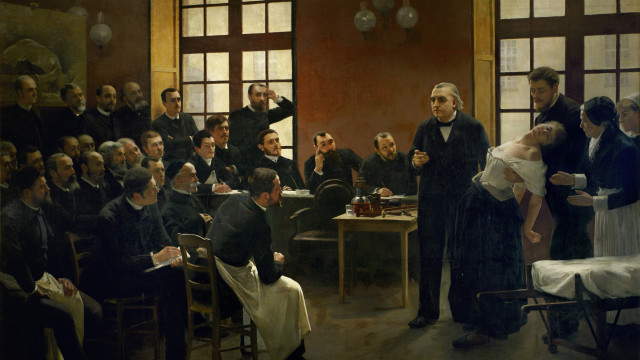




























See Also
See Again
© Getty Images
0 / 29 Fotos
Lack of motivation
- When it comes to winter workouts, many people find it difficult to muster the motivation.
© Shutterstock
1 / 29 Fotos
Statistics
- According to the National Recreation and Park Association, 60% of US adults say they are less active in the winter than in the summer.
© Shutterstock
2 / 29 Fotos
Overcoming the challenges
- Although it can be difficult to motivate yourself to exercise when it is cold and dark outside, there are proven benefits to doing so.
© Shutterstock
3 / 29 Fotos
Proven benefits
- Indeed, research suggests that exercise can help to combat the winter blues, as well as build your resilience.
© Getty Images
4 / 29 Fotos
Physical challenge
- Exercising in the cold is physically more challenging, but there are certain things you can do to ease the burden and give yourself an enjoyable workout.
© Shutterstock
5 / 29 Fotos
Beat the winter blues
- There are two main benefits of working out in cold weather. The first is that it may help you to beat the winter blues.
© Shutterstock
6 / 29 Fotos
SAD
- During the coldest, darkest months of the year, many people suffer from seasonal affective disorder (SAD).
© iStock
7 / 29 Fotos
SAD symptoms
- Symptoms of SAD include a persistent sad or anxious mood that lasts for at least two weeks, decreased energy, oversleeping, and a lack of interest in hobbies.
© Shutterstock
8 / 29 Fotos
Alleviating symptoms
- Studies show that, when combined with bright light therapy, cold weather exercise can help to alleviate some of the symptoms of SAD.
© Shutterstock
9 / 29 Fotos
Build resilience
- The second main benefit of winter exercise is that it can help to boost your resilience. Let's take cold water swimming as an example.
© Getty Images
10 / 29 Fotos
Recent trend
- Cold water swimming has become increasingly popular in recent years, with many people describing how it boosts their energy levels and lifts their mood.
© Getty Images
11 / 29 Fotos
Flood of hormones
- When the body is immersed in very cold water, it produces a cold shock response. This drives up heart rate and blood pressure, and floods the body with stress hormones.
© Shutterstock
12 / 29 Fotos
Post swimming high
- On the one hand, this cocktail of stress hormones may be the reason people report a ‘post swimming high’ after taking their cold-water dip.
© Getty Images
13 / 29 Fotos
Surviving stressors
- On the other hand, the practice can help to build resilience: by observing that they are able to survive quite a severe physical stressor, people may feel better equipped to face other stressors in their lives.
© Getty Images
14 / 29 Fotos
Starting out
- If you are thinking of trying cold water swimming for the first time, it is recommended that you find a local group or qualified coach to support you.
© Getty Images
15 / 29 Fotos
Real feel
- As previously mentioned, exercising in cold temperatures can feel more difficult than exercising in warmer temperatures.
© Shutterstock
16 / 29 Fotos
Optimal temperature
- In fact, according to experts, the optimal temperature for exercising is 11°C (52°F). Anything below that and performance will start to deteriorate.
© Shutterstock
17 / 29 Fotos
Warm up indoors
- The first thing you can do to help yourself rise to the challenge is to make sure that you are warm before you start to exercise.
© Shutterstock
18 / 29 Fotos
Warm up indoors
- Studies show that staying warm until the point that you start exercising is critical, and that starting when you are cold will significantly reduce performance.
© Shutterstock
19 / 29 Fotos
Start immediately
- If possible, it is best to do a thorough warm-up indoors before you go outdoors. And then as soon as you step out of the door, start exercising.
© Shutterstock
20 / 29 Fotos
Avoid the initial dip
- By doing this, you will be less likely to experience an initial dip in temperature that causes a shutdown of blood flow to the extremities.
© Shutterstock
21 / 29 Fotos
Wear layers
- If you are heading out for an open-air winter session, it is a good idea to wear layers. When exercising in the cold, it can be difficult to strike the balance between keeping warm and overheating.
© Getty Images
22 / 29 Fotos
Risk of overdoing it
- Indeed, many people wrap themselves up so warm that they end up sweating, which is less than ideal because you want to avoid becoming wet.
© Getty Images
23 / 29 Fotos
Adjust as you go
- The simple solution to this is to wear multiple light layers. That way, you can adjust your outfit as your body temperature changes throughout the session.
© Getty Images
24 / 29 Fotos
Choosing a material
- If possible, avoid wearing cotton, since this draws a lot of heat out of the body. Instead, opt for moisture-wicking synthetic or natural materials, such as polyester, nylon, or silk.
© Shutterstock
25 / 29 Fotos
Stay hydrated
- Finally, it is important that you remember to drink enough water when exercising in cold weather. This can sometimes be difficult.
© Shutterstock
26 / 29 Fotos
Stay hydrated
- Indeed, some studies show that people actually become more dehydrated when exercising in the winter than in the summer, because drinking water is less of a priority.
© Shutterstock
27 / 29 Fotos
Cold air
- Remember that breathing in cold air can quickly dehydrate you and that it is important to take on enough fluids. Sources: (BBC) (NRPA) See also: The impact of cold plunges on your body
© Shutterstock
28 / 29 Fotos
© Getty Images
0 / 29 Fotos
Lack of motivation
- When it comes to winter workouts, many people find it difficult to muster the motivation.
© Shutterstock
1 / 29 Fotos
Statistics
- According to the National Recreation and Park Association, 60% of US adults say they are less active in the winter than in the summer.
© Shutterstock
2 / 29 Fotos
Overcoming the challenges
- Although it can be difficult to motivate yourself to exercise when it is cold and dark outside, there are proven benefits to doing so.
© Shutterstock
3 / 29 Fotos
Proven benefits
- Indeed, research suggests that exercise can help to combat the winter blues, as well as build your resilience.
© Getty Images
4 / 29 Fotos
Physical challenge
- Exercising in the cold is physically more challenging, but there are certain things you can do to ease the burden and give yourself an enjoyable workout.
© Shutterstock
5 / 29 Fotos
Beat the winter blues
- There are two main benefits of working out in cold weather. The first is that it may help you to beat the winter blues.
© Shutterstock
6 / 29 Fotos
SAD
- During the coldest, darkest months of the year, many people suffer from seasonal affective disorder (SAD).
© iStock
7 / 29 Fotos
SAD symptoms
- Symptoms of SAD include a persistent sad or anxious mood that lasts for at least two weeks, decreased energy, oversleeping, and a lack of interest in hobbies.
© Shutterstock
8 / 29 Fotos
Alleviating symptoms
- Studies show that, when combined with bright light therapy, cold weather exercise can help to alleviate some of the symptoms of SAD.
© Shutterstock
9 / 29 Fotos
Build resilience
- The second main benefit of winter exercise is that it can help to boost your resilience. Let's take cold water swimming as an example.
© Getty Images
10 / 29 Fotos
Recent trend
- Cold water swimming has become increasingly popular in recent years, with many people describing how it boosts their energy levels and lifts their mood.
© Getty Images
11 / 29 Fotos
Flood of hormones
- When the body is immersed in very cold water, it produces a cold shock response. This drives up heart rate and blood pressure, and floods the body with stress hormones.
© Shutterstock
12 / 29 Fotos
Post swimming high
- On the one hand, this cocktail of stress hormones may be the reason people report a ‘post swimming high’ after taking their cold-water dip.
© Getty Images
13 / 29 Fotos
Surviving stressors
- On the other hand, the practice can help to build resilience: by observing that they are able to survive quite a severe physical stressor, people may feel better equipped to face other stressors in their lives.
© Getty Images
14 / 29 Fotos
Starting out
- If you are thinking of trying cold water swimming for the first time, it is recommended that you find a local group or qualified coach to support you.
© Getty Images
15 / 29 Fotos
Real feel
- As previously mentioned, exercising in cold temperatures can feel more difficult than exercising in warmer temperatures.
© Shutterstock
16 / 29 Fotos
Optimal temperature
- In fact, according to experts, the optimal temperature for exercising is 11°C (52°F). Anything below that and performance will start to deteriorate.
© Shutterstock
17 / 29 Fotos
Warm up indoors
- The first thing you can do to help yourself rise to the challenge is to make sure that you are warm before you start to exercise.
© Shutterstock
18 / 29 Fotos
Warm up indoors
- Studies show that staying warm until the point that you start exercising is critical, and that starting when you are cold will significantly reduce performance.
© Shutterstock
19 / 29 Fotos
Start immediately
- If possible, it is best to do a thorough warm-up indoors before you go outdoors. And then as soon as you step out of the door, start exercising.
© Shutterstock
20 / 29 Fotos
Avoid the initial dip
- By doing this, you will be less likely to experience an initial dip in temperature that causes a shutdown of blood flow to the extremities.
© Shutterstock
21 / 29 Fotos
Wear layers
- If you are heading out for an open-air winter session, it is a good idea to wear layers. When exercising in the cold, it can be difficult to strike the balance between keeping warm and overheating.
© Getty Images
22 / 29 Fotos
Risk of overdoing it
- Indeed, many people wrap themselves up so warm that they end up sweating, which is less than ideal because you want to avoid becoming wet.
© Getty Images
23 / 29 Fotos
Adjust as you go
- The simple solution to this is to wear multiple light layers. That way, you can adjust your outfit as your body temperature changes throughout the session.
© Getty Images
24 / 29 Fotos
Choosing a material
- If possible, avoid wearing cotton, since this draws a lot of heat out of the body. Instead, opt for moisture-wicking synthetic or natural materials, such as polyester, nylon, or silk.
© Shutterstock
25 / 29 Fotos
Stay hydrated
- Finally, it is important that you remember to drink enough water when exercising in cold weather. This can sometimes be difficult.
© Shutterstock
26 / 29 Fotos
Stay hydrated
- Indeed, some studies show that people actually become more dehydrated when exercising in the winter than in the summer, because drinking water is less of a priority.
© Shutterstock
27 / 29 Fotos
Cold air
- Remember that breathing in cold air can quickly dehydrate you and that it is important to take on enough fluids. Sources: (BBC) (NRPA) See also: The impact of cold plunges on your body
© Shutterstock
28 / 29 Fotos
Science-backed tips for exercising in cold weather
Muster the motivation and maximize your efforts
© Getty Images
As tempting as it may be to skip your workout during the winter, research shows that you are much better off getting up off that couch and getting yourself moving.
Although exercising in cold weather comes with its unique challenges, there are things you can do to make the experience easier and more enjoyable.
Curious? Check out this gallery to find out more.
RECOMMENDED FOR YOU






























MOST READ
- Last Hour
- Last Day
- Last Week








